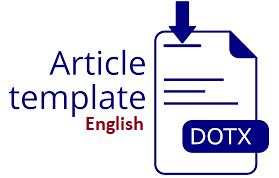Perancangan dan Implementasi Sistem Pemberdayaan Perempuan Untuk Meningkatkan Efisiensi Pencatatan dan Pelaporan Bantuan Perempuan Kepala Keluarga Menggunakan Metode Agile
DOI:
https://doi.org/10.30865/klik.v3i6.939Keywords:
Women; Family; Empowerment; Business; Heads of households; BusinesswomanAbstract
Women's empowerment is an effort to empower women to gain access to and control over resources, economic, political, social, cultural, so that women can organize themselves so as to be able to build capabilities and self-concept and ultimately improve the quality of life for women. Based on BPS data for 2020, the number of women who are heads of households in Indonesia is 11.44 million and some of them are at a low level of welfare. Meanwhile in Depok City, based on data from the Depok City Disdukcapil in 2020, there were 61,369 female family heads, 13,006 divorced and 48,363 divorced. In view of the significant increase in the number of PEKKA group members (Women headed households), of course it is not enough to manually record and manage this data, but there is a need for an information system that can facilitate data recording and recording as well as data analysis as information for policy making. The objectives of making the application for the empowerment of female heads of households include: Formation of a database for empowering women heads of households in sub-districts including their dependents, history of training, history of assistance, data on domestic violence, and other important data. Means of updating data on female heads of household members and their business activities heads of sub-district groups, Availability of promotional facilities for business products for women heads of households, Ease of access to information for PEKKA members
Downloads
References
Ria Isti Sutoyo, ‘Pemberdayaan Perempuan Melalui Implementasi …. Pemberdayaan Perempuan Melalui Implementasi Program Kerajinan Bordir di Desa Karang Malang, Gebog Kabupaten Kudus’.
D. Pemberdayaan, P. Dan, P. Anak, and P. Penduduk, ‘PEMERINTAH KOTA DEPOK’.
E. Yuliani Saputri, A. Erma Yuliani Saputri, P. Studi Ilmu Sosiatri, and F. Ilmu Sosial dan Politik Universita Mulawarman judul skripsi Peran Wanita Sebagai Kepala Keluarga dalam Melaksanakan Fungsi Keluarga Di Kelurahan Sungai Merdeka Kecamatan Samboja Di, ‘PERAN WANITA SEBAGAI KEPALA KELUARGA DALAM MELAKSANAKAN FUNGSI KELUARGA DI KELURAHAN SUNGAI MERDEKA KECAMATAN SAMBOJA’, eJournal Sosiatri-Sosiologi, vol. 2016, no. 2, pp. 212–226, 2016.
R. Prasetya Wibawa and L. V. Wihartanti, ‘STRATEGI PEREMPUAN KEPALA KELUARGA (PEKKA) DALAM MENCIPTAKAN KEMANDIRIAN EKONOMI KELUARGA DI DESA GESI KECAMATAN GESI KABUPATEN SRAGEN’, e-ISSN 2442-9449 Vol.6. No.2(2018) 57-62p-ISSN 2337-4721.
S. Nurgina et al., ‘Pemberdayaan Perempuan melalui Perempuan Kepala Keluarga dalam Meningkatkan Ekonomi Keluarga’, 2021.
F. A. R. H. M. Putri Dwi Ramadhan, ‘755-Article Text-2720-2-10-20220907’, Peran Perempuan Kepala Keluarga dalam Melaksanakan Fungsi Keluarga di Nagari Pandai Sikek Kecamatan X Koto Kabupaten Tanah Datar, pp. 1–12, 2022.
21 Januari 2021 HASIL SENSUS PENDUDUK 2020BERITARESMISTATISTIKHasil Sensus Penduduk 2020KEMENTERIANDALAM NEGERIBerita Resmi Statistik No. 7/01/Th. XXIV, ‘BERITA RESMI STATISTIK Hasil Sensus Penduduk 2020’, 2021.
S. Kasus et al., AKSES TERHADAP KEADILAN: PEMBERDAYAAN PEREMPUAN KEPALA KELUARGA DI INDONESIA. 2011. [Online]. Available: www.smeru.or.id.
N. Hikmah, A. Suradika, R. Andi, and A. Gunadi, ‘METODE AGILE UNTUK MENINGKATKAN KREATIVITAS GURU MELALUI BERBAGI PENGETAHUAN (KNOWLEDGE SHARING)’, Fakultas Ilmu Pendidikan Universitas Muhammadiyah Jakarta1.
T. S. Hoga Saragih, ‘PENGEMBANGAN SISTEM INFORMASI DENGAN METODE AGILE DEVELOPMENT YANG SEARAH DENGAN RANCANGAN STRATEGIS IT/IS PADA PERUSAHAAN’, 2013.
N. Apriliyani, E. Setiawan, and A. Muchayan, ‘Implementasi Metode Agile Dalam Pengembangan Aplikasi Pengenalan Budaya Berbasis Web’, Jurnal Ilmu Komputer dan Bisnis, vol. 13, no. 1, pp. 8–21, May 2022, doi: 10.47927/jikb.v13i1.261.
M. Fariz Iqbal and H. P. Putro, ‘Penerapan Simple Agile Methodology dalam Pengembangan Aplikasi Web’.
D. L. Alexandes, R. Aditio, and Y. Jumaryadi, ‘Implementasi Metode Agile dalam Pengembangan Sistem E-document’, Journal of Information System Research (JOSH), vol. 4, no. 1, pp. 318–329, Nov. 2022, doi: 10.47065/josh.v4i1.2349.
M. Prakatis Penelitian Kuantitatif dan Kualitatif Buku Ajar Perkuliahan Oleh and P. Suryana, ‘METODOLOGI PENELITIAN Model Prakatis Penelitian Kuantitatif dan Kualitatif’, 2010.
D. Sugiarti and N. Ani, ‘Seminar Nasional Pengaplikasian Telematika (SINAPTIKA) Implementasi Aplikasi Web Pengelolaan Infomasi Kegiatan Kampus Dengan Metode Agile’, 2021.
M. Shidqi and M. A. Ricky, ‘PENGEMBANGAN APLIKASI DAN WEBSITE MANAJEMEN PROYEK PT SANTAI BERKUALITAS SYBERINDO MENGGUNAKAN METODE AGILE’, SEMINASTIKA, vol. 3, no. 1, pp. 8–15, Nov. 2021, doi: 10.47002/seminastika.v3i1.249.
J. Sains, D. Teknologi, P. Sukmasetya, A. Setiawan, and E. R. Arumi, ‘PENGGUNAAN USABILITY TESTING SEBAGAI ALAT EVALUASI WEBSITE KRS ONLINE PADA PERGURUAN TINGGI’, 2020.
A. Supriyatna, ‘PENERAPAN USABILITY TESTING UNTUK PENGUKURAN TINGKAT KEBERGUNAAN WEB MEDIA OF KNOWLEDGE’, Jurnal Ilmiah Teknologi-Informasi dan Sains (TeknoIS), vol. 8, pp. 1–16, 2018.
H. Rizki, K. Annafi, I. Aknuranda, and A. D. Herlambang, ‘Evaluasi Usability dan Penyusunan Rekomendasi Rancangan Antarmuka Pengguna Sistem Informasi Aplikasi Guru Surabaya (SIAGUS) pada SMP Negeri 13 Surabaya’, 2021. [Online]. Available: http://j-ptiik.ub.ac.id
Z. M. R. A. Eko Saputra, ‘USABILITY TESTINGUNTUK MENGUKUR PENGGUNAAN WEBSITEINSPEKTORAT KOTA PALEMBANG’, pp. 1–9, 2014.
Bila bermanfaat silahkan share artikel ini
Berikan Komentar Anda terhadap artikel Perancangan dan Implementasi Sistem Pemberdayaan Perempuan Untuk Meningkatkan Efisiensi Pencatatan dan Pelaporan Bantuan Perempuan Kepala Keluarga Menggunakan Metode Agile
ARTICLE HISTORY
Issue
Section
Copyright (c) 2023 Shintia Mutiarani, Agung Triayudi, Winarsih

This work is licensed under a Creative Commons Attribution 4.0 International License.
Authors who publish with this journal agree to the following terms:
- Authors retain copyright and grant the journal right of first publication with the work simultaneously licensed under Creative Commons Attribution 4.0 International License that allows others to share the work with an acknowledgment of the work's authorship and initial publication in this journal.
- Authors are able to enter into separate, additional contractual arrangements for the non-exclusive distribution of the journal's published version of the work (e.g., post it to an institutional repository or publish it in a book), with an acknowledgment of its initial publication in this journal.
- Authors are permitted and encouraged to post their work online (e.g., in institutional repositories or on their website) prior to and during the submission process, as it can lead to productive exchanges, as well as earlier and greater citation of published work (Refer to The Effect of Open Access).
















